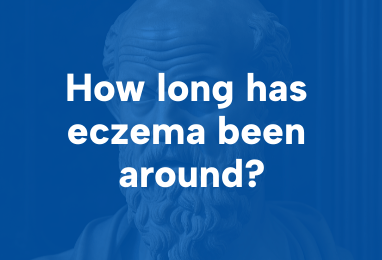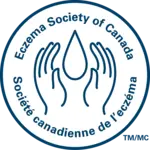Exploring the history and advances in atopic dermatitis with Dr. Joseph Lam
Vancouver-based pediatrician Dr. Joseph Lam recently traced the history of atopic dermatitis for us in a fascinating session of ESC’s Life with Eczema Virtual Conference. Here are some highlights!

Do you know the history of eczema? Here are some fast facts:
- Eczema has been around for a very long time and there are remedies passed down for centuries in traditional Chinese medicine to treat infantile eczema. The Ebers papyrus, the oldest and most important medical document of ancient Egypt, recorded remedies to “still” the itching of the skin.
- Augustus, the first Roman Emperor, was said to be very itchy and marred by hard, dried patches that he would scrape in the bath. He was also reported to have tightness of the diaphragm in early spring and a runny nose. Does that sound familiar?! This may be the first documentation of the link between atopic dermatitis, asthma, and hay fever.
- In the Islamic Golden Age, Persian intellectual Avicenna described several skin conditions that are consistent with eczema and dry skin. He also made the connection between bathing too much and having dry skin. (We all know to apply our moisturizers right after the bath!)
- The European Renaissance introduced the printing press and the first textbooks of dermatology in Italy, France, and the UK described an itchy condition in children that is synonymous with what we see as eczema today. During this time the philosophy was “don’t treat it,” as they thought the oozing seen in eczema was the body’s way of pushing out toxins in the blood.
- In 1818, English physicians Willan and Bateman coined the term “eczema,” meaning to erupt or boil over in Greek, and this ushered in a new era of advances in eczema. Von Hebra and Kaposi were the first to use topical remedies like tar and sulphur and suggested “not-too-warm-bathing” and emollients. Wilson and Besnier defined infantile eczema, focused on the severe itching that intensified at night, and saw the link to other allergic diseases.
- In 1923, the term “atopy” from the Greek atopia meaning “out of place” was coined, and in 1933 Wise and Sulzberger introduced the term “atopic dermatitis”.
- In 1952, topical corticosteroids were introduced to treat atopic dermatitis.
- Later, in 1980, the first diagnostic criteria was developed by Dr. Hanifin and Dr. Rajka for atopic dermatitis, the most common form of eczema. This criteria is still used today.
21st-century treatment innovations
- 2001 – The first topical calcineurin inhibitors are approved in Canada
- 2016 – The first biologic injectable treatment for moderate to severe atopic dermatitis is approved
- 2017 – The first topical PDE4 inhibitor is approved in Canada
- 2021 – The first oral JAK inhibitors are approved in Canada
While there is no cure yet for eczema, things are getting better with exciting areas for medical advances in the future!
Eczema Society of Canada thanks Joseph Lam, MD, FRCPC (Pediatrics) for his volunteer contribution to this educational content.
Disclaimer: Information provided in this resource does not constitute medical advice and is not intended to be used as a diagnostic tool. The information is up-to-date at time of publication. All medications, interventions, and treatment plans have risks and benefits, and it is important that individuals discuss their or their child’s specific health care needs with a qualified health care professional.
July 2023



